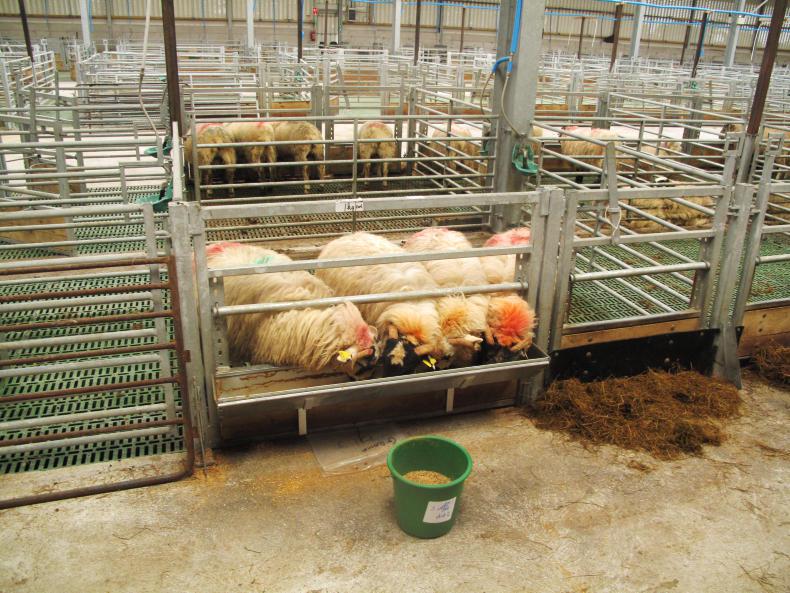The finishing of store lambs over the winter period has the potential to significantly increase overall farm profitability by utilising surplus grass and unused shed space. The purpose of this article is to outline to producers key areas that should be kept in mind when finishing lambs to ensure that lamb performance is optimised. The targets and results set out in this article have been achieved annually in store lamb finishing trials conducted at the Teagasc Athenry Sheep Research Farm.
Breed type
Crossbred lambs will have high growth rates (250g/hd/day), better feed conversion efficiency (FCE) (5:1) and will also have better carcase conformation and kill-out percentage. They command a significant premium when purchased, which will not be available over the sale price achieved by pure hill lambs.
Hill lambs are also capable of achieving good growth rates (~200g/hd/day), albeit with a poorer FCE of about 6.5kg of concentrate required to put on 1kg of liveweight.
These lambs have the potential to financially outperform crossbred lambs due to the difference in purchase price.
One of the surprising facts to emerge from the Athenry store lamb trial was that the lighter lambs actually outperformed the heavier lambs year on year when grazed on lowland pasture. This is demonstrated in Table 1.

Grass
The most profitable systems include a grazing period at grass. Ideally, lambs would be grazed until forage runs out in December/January from which point they are either housed or finished outdoors on ad-lib meal. The grazing period delivers twofold in achieving weight gain and developing a larger frame which can be utilised in the intensive finishing phase.
Concentrate supplementation
The purpose of supplementing lambs with concentrate feed is to provide them with a concentrated form of energy and protein in a digestible form which is also balanced to provide essential vitamins and minerals.
While the manufacturer will be legally obliged to declare the composition of the concentrate in terms of crude protein, oil and fibre there is no requirement to declare the net energy content of the feed. Therefore, for farmers to make an educated guess as to the quality of the feed they are purchasing they will need to look at the contents in terms of the quality of the ingredients. Table 2 shows the energy density of various ingredients when included in lamb finishing diets. Growing lambs (less than 35kg) have an additional requirement for protein and should receive a diet containing 13% to 14% crude protein. Lambs that are well-grown and in the finishing phase will not benefit from dietary crude protein levels above 11% or 12%.

Housing
Lambs can be housed in purpose-built sheep houses or, alternatively, in any shed which will provide the basics in terms of water supply and ventilation. Sheds built after 2006 (to meet nitrates regulations) must have a concrete floor.
Key requirements for housing
Marketing
Traditionally, the highest prices for lambs are paid in the late February to early April period. Targeting lamb finishing to this period will pay dividends in terms of maximising prices attainable. Before purchasing store lambs, it is important to do a budget to assess the viability of the venture. A store lambs calculator can be found on www.teagasc.ie/animals/sheep/financial-management.
Table 3 details two example budgets, one for lambs housed within 10 days of purchasing and the second for lambs achieving a grazing period of 60 days.
When on full concentrate feeding, it is important to regularly weigh lambs and market as they become fit. A proportion of lambs can finish very quickly. Wether lambs tend to become over fat at lighter weights than ram lambs. Hill lambs become over fat at lighter weight than crossbred or lowland lambs.

What to remember when finishing lambs on concentrate diets
Michael Gottstein is head of the sheep Knowledge Transfer programme at Teagasc, Macroom, Co Cork, while Michael Diskin is sheep enterprise leader at the Animal & Grassland Research and Innovation Centre, Teagasc, Mellows Campus, Athenry, Co Galway.
